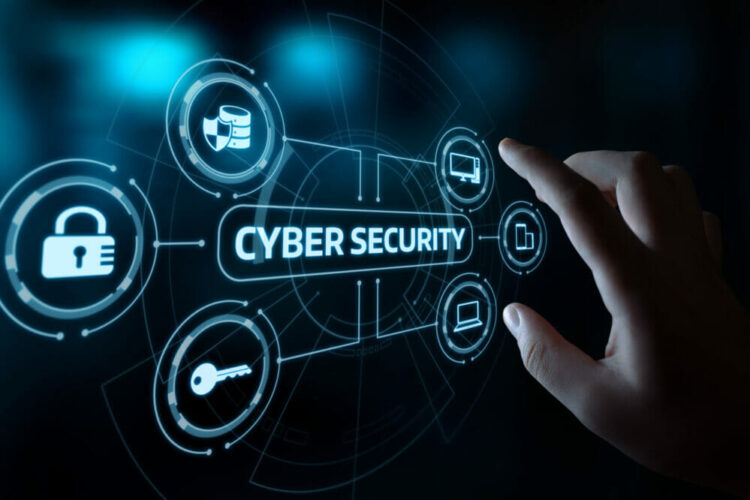Cybersecurity refers to the practice of protecting computer systems, networks, and data from digital attacks, theft, and damage. As technology continues to evolve, so do the methods employed by cybercriminals, making cybersecurity an essential field for businesses and individuals alike. In today’s interconnected world, securing sensitive data and protecting privacy have never been more critical.
What is Cyber Security?
Cybersecurity encompasses a wide range of techniques, tools, and practices designed to safeguard digital information from unauthorized access, attacks, and damage. It involves implementing measures that protect the integrity, confidentiality, and availability of information stored on digital devices and transmitted across networks.
Importance of Cyber Security
- Protection of Sensitive Data
Cybersecurity is crucial in safeguarding sensitive personal, financial, and business information. Cybercriminals can exploit data to commit fraud, steal identities, or engage in espionage, which can have devastating consequences. - Maintaining Business Continuity
Cyberattacks like ransomware or data breaches can disrupt business operations, leading to downtime, loss of reputation, and financial losses. Effective cybersecurity strategies ensure that businesses remain operational and resilient against cyber threats. - Preventing Financial Loss
Cybercrime has become a billion-dollar industry, with hackers targeting both individuals and organizations. Financial loss due to data breaches, ransomware attacks, and other cyber threats can be crippling without proper protection in place. - Protecting Privacy
As individuals and organizations share more personal and sensitive information online, protecting that information becomes a key concern. Cybersecurity helps ensure that data is not accessed or exploited without permission, preserving privacy for users.
Common Cybersecurity Threats
- Malware
Malware refers to malicious software, such as viruses, worms, and Trojans, designed to harm or exploit computer systems. Malware can corrupt data, steal information, and disable devices, making it one of the most common cybersecurity threats. - Phishing
Phishing is a form of social engineering where attackers impersonate trusted entities (such as banks or government organizations) to trick individuals into providing sensitive information like passwords or credit card numbers. - Ransomware
Ransomware is a type of malware that encrypts a victim’s files and demands a ransom payment to restore access. Ransomware attacks can cause severe disruption to individuals and businesses, with some organizations paying large sums to regain access to their data. - Data Breaches
A data breach occurs when unauthorized individuals gain access to sensitive data, such as personal identification information, financial records, or company secrets. Data breaches can result in identity theft, financial loss, and damage to an organization’s reputation. - Denial of Service (DoS) Attacks
DoS attacks overwhelm a system’s resources, making it unavailable to legitimate users. Distributed Denial of Service (DDoS) attacks involve multiple sources and are even more difficult to mitigate, often leading to downtime and loss of service. - Man-in-the-Middle (MitM) Attacks
In a Man-in-the-Middle attack, cybercriminals intercept and potentially alter communications between two parties without their knowledge. These attacks can result in the theft of sensitive information, including passwords and credit card numbers. - SQL Injection
SQL injection occurs when attackers insert malicious SQL queries into input fields to gain unauthorized access to databases. This can result in the loss of data or unauthorized actions being performed on a system.
Key Cyber Security Measures
- Firewall Protection
Firewalls are security systems that monitor and control incoming and outgoing network traffic. They help prevent unauthorized access to a computer or network and can block malicious traffic from reaching a system. - Encryption
Encryption is the process of converting data into a coded format that only authorized parties can read. Encrypting sensitive data, whether in transit or at rest, ensures that even if attackers gain access, they cannot read or misuse the data. - Antivirus and Anti-Malware Software
Antivirus and anti-malware programs are designed to detect, prevent, and remove malicious software. Regularly updating and running these programs can help protect systems from malware threats. - Multi-Factor Authentication (MFA)
MFA is a security measure that requires users to provide two or more verification factors to access an account or system. This can include something you know (a password), something you have (a phone), or something you are (a fingerprint). - Regular Software Updates
Keeping software, operating systems, and applications up to date is crucial for cybersecurity. Many updates include patches that fix vulnerabilities and protect systems from newly discovered threats. - Security Awareness Training
Cybersecurity is not only about technology—it’s also about people. Educating employees and users about safe online practices, such as recognizing phishing emails and using strong passwords, can reduce the risk of successful attacks. - Backup Systems
Regularly backing up important data ensures that in the event of a cyberattack, such as ransomware, the data can be restored without paying a ransom or losing important information.
The Future of Cyber Security
As technology evolves, so do cyber threats. With the rise of the Internet of Things (IoT), artificial intelligence, and cloud computing, cybercriminals have more avenues to exploit. The future of cybersecurity will likely focus on advanced threat detection using machine learning and artificial intelligence, as well as the development of more sophisticated defense mechanisms to protect against emerging threats.
Conclusion
Cybersecurity is an essential component of modern life. With an increasing number of cyber threats targeting both individuals and organizations, the need for robust protection measures is paramount. By understanding common cyber risks and implementing security best practices, individuals and businesses can minimize the impact of cybercrime and protect sensitive information from malicious actors.

